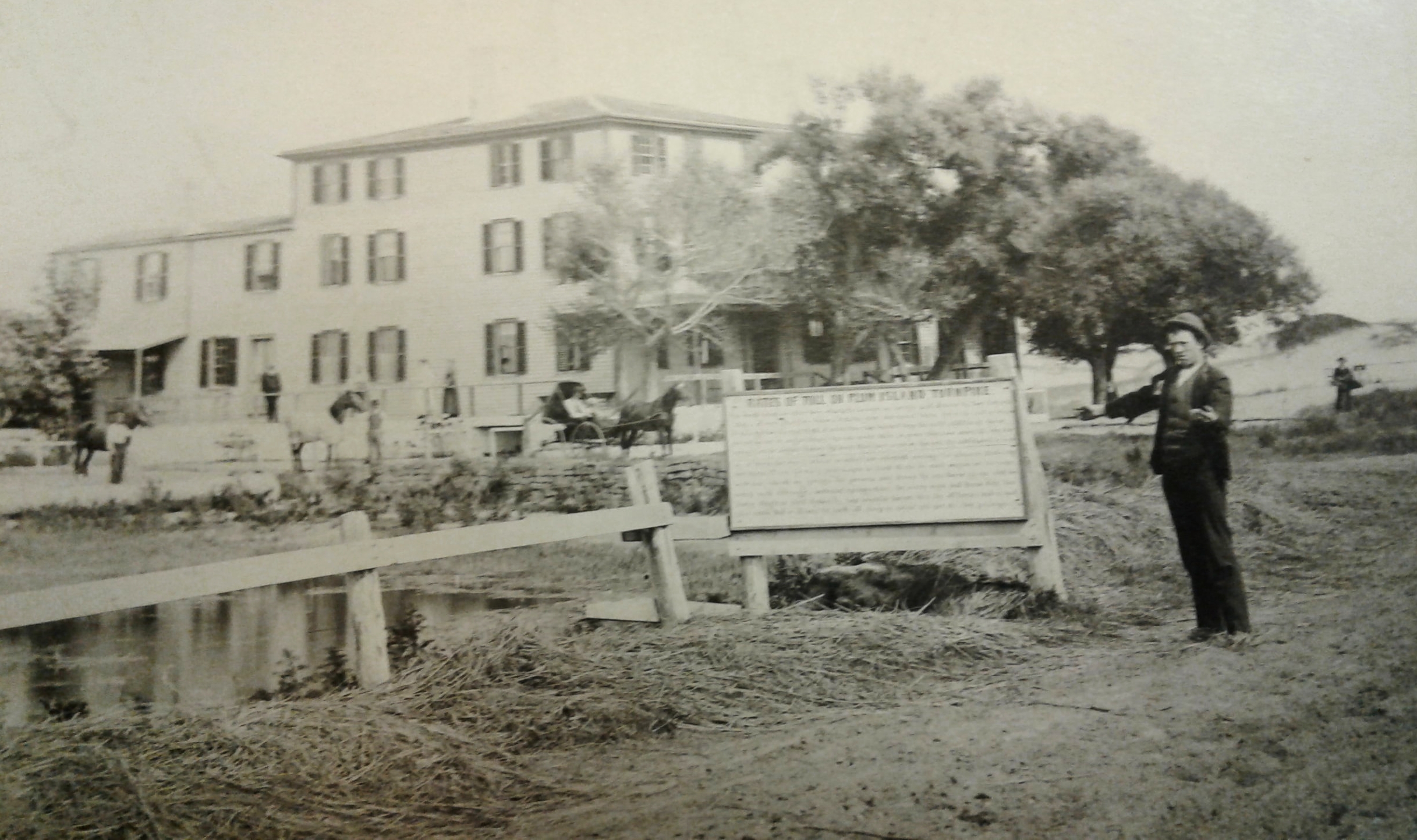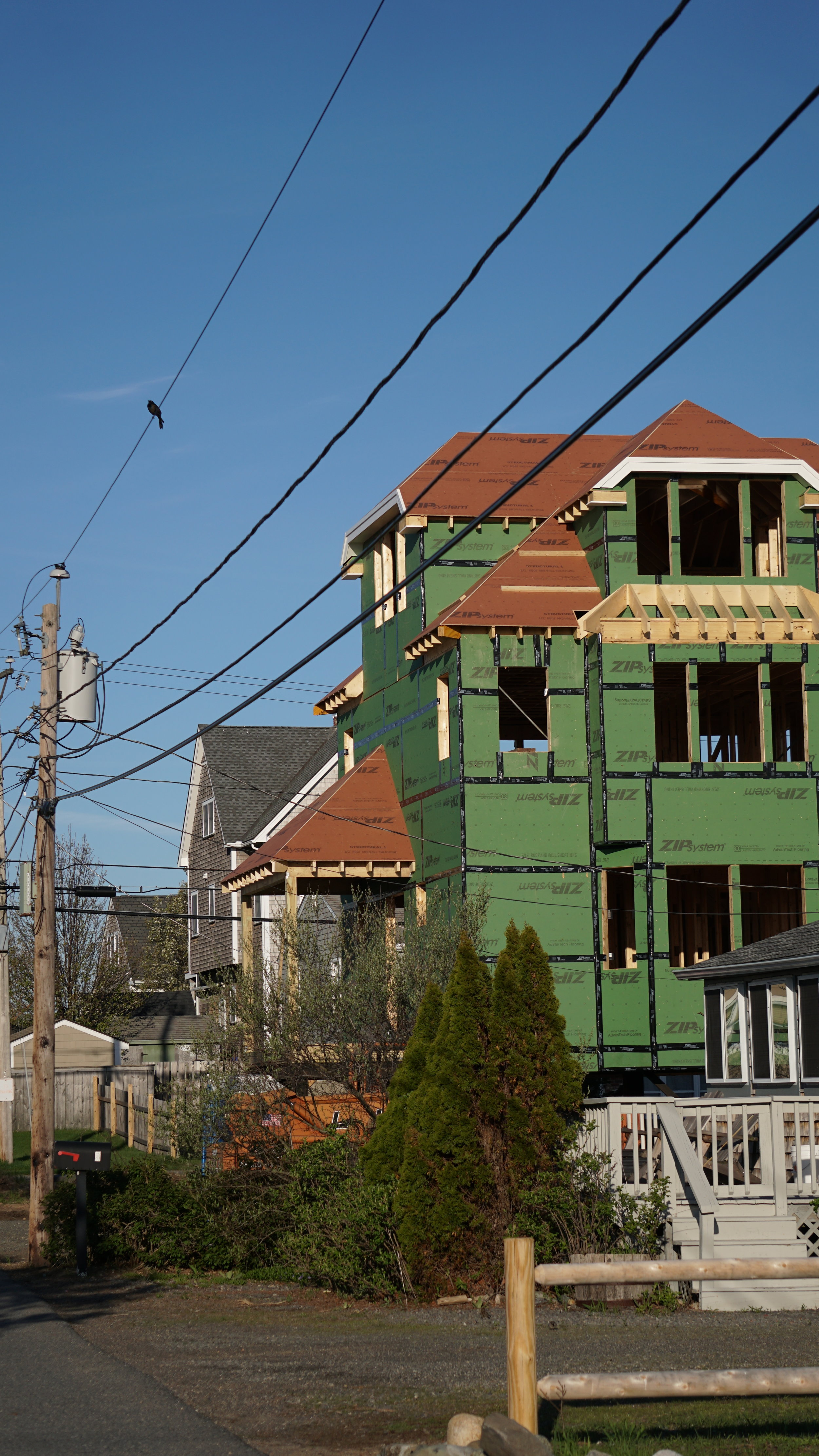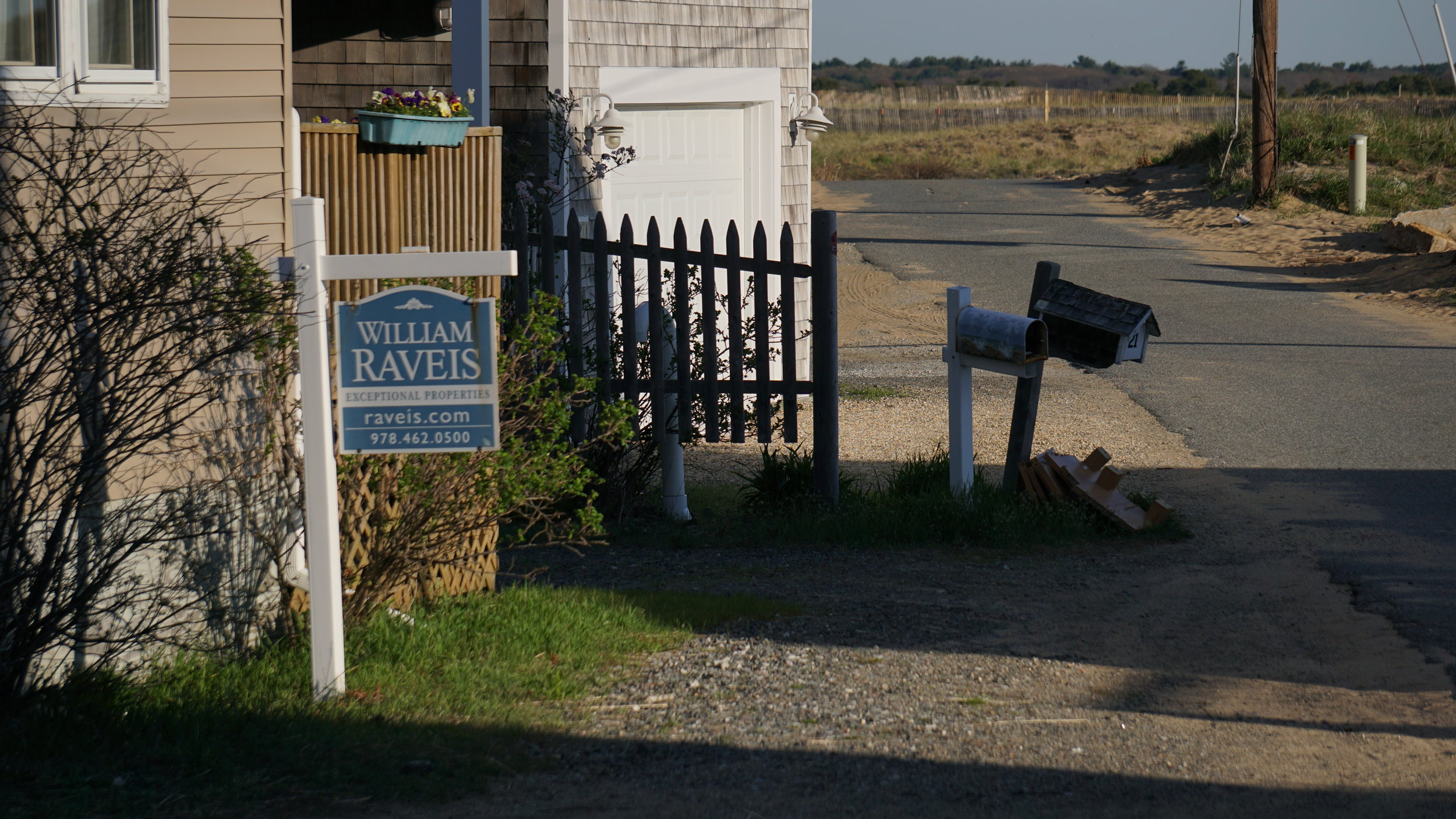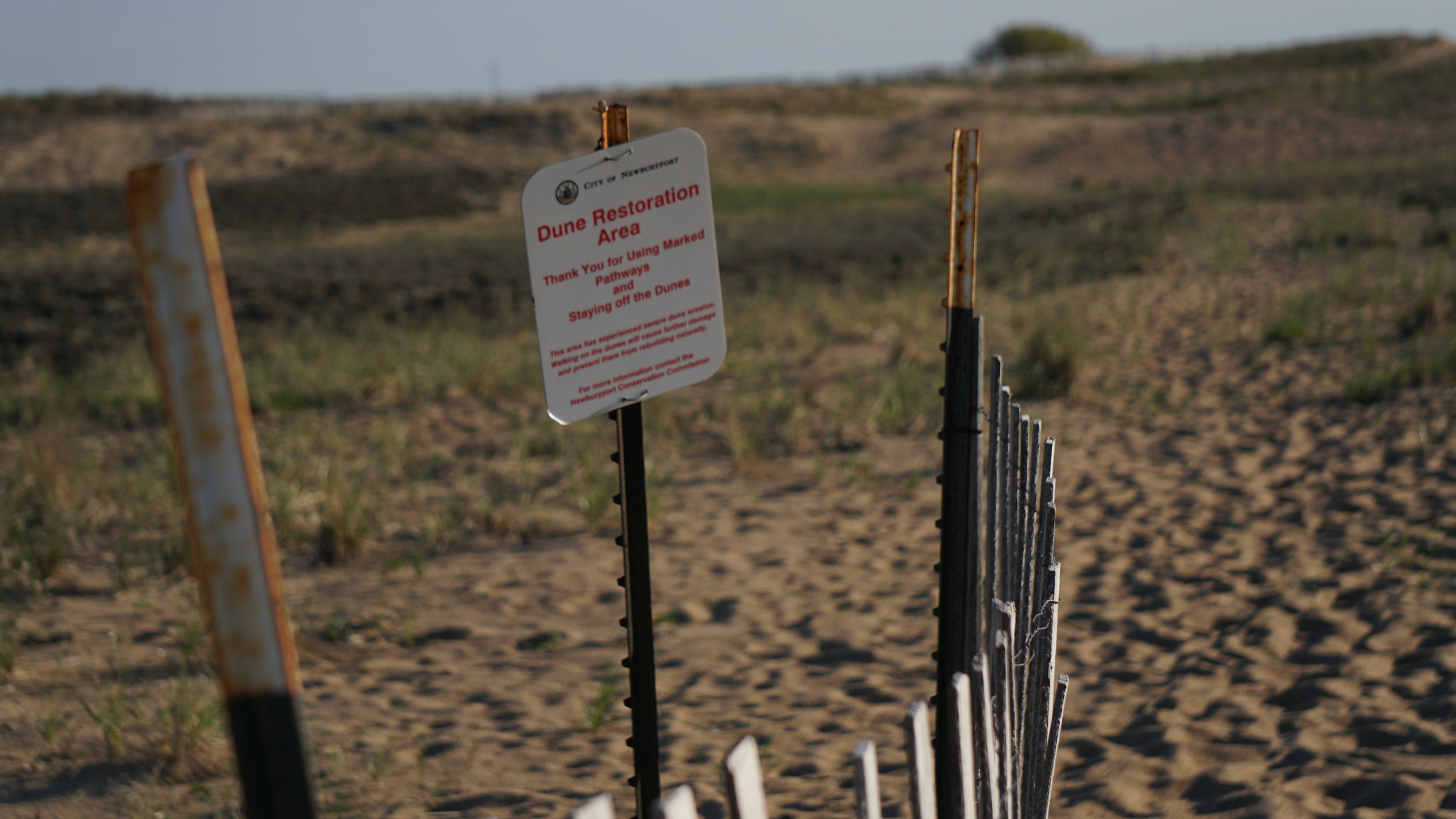DISSECTING BOSTON IX: Undesirables
Castles are being built on slowly disappearing sand. It is spring and, throughout Plum Island, you can hear the loud clang of hammers on wood. The fences, torn down by winter storms, are re-erected. The sand dunes, stolen from the sand lovers by overreaching waves, are reconstructed. The amophilia is replanted. The restructuring of the Plum Islanders’ environment is overshadowed by looming skeletons of houses. These skeletons are soon to be filled by new Plum Island landowners, settling on their private strip of “Plum Perfect” heaven. How long these sands will resist the rising tides is questionable, a question most Plum Islanders choose to ignore. How long will capitalism on steroids resist a collapsing ecosystem? That is another question mark our fossil addicted mind can’t truly comprehend. For now, the castles are the private domain of the new lords of the Island. They can enjoy the 1,000,000-dollar vice, before the ocean takes it from them. We can all enjoy our junky capitalism, before the planet decides to sign the papers for our eviction.
In this blog post, I will explore how physical and invisible barriers create, shape a community and its population. The barriers erected by the Plum Island Beach Co. have constructed the Plum Island of today, laying the bedrock of the current Real Estate Environment. This foundation is closely linked to the history of New England and the mythology of the Yankee. Much like the mythology of “Make America Great Again,” the Plum Island Beach Co.’s ideology featured an element of exclusion. Plum Island developed as an All-American construction; a mask that was only meant for a few, a violent omission.

Postcard of the Plum Island Hotel and Turnpike, Courtesy of the Newburyport Public Library Archival Center.
Turnpikes and Real Estate
While invisible lines currently restrict access to this unofficial resort, there are no current physical barriers preventing people from traveling to Plum Island. In 1806, the Plum Island Turnpike was built to connect the Island to the mainland (Wear 3). That same year a hotel was built to house the workers who labored to build the new road (3). The Hotel soon became the centerpiece of Plum Island and the bedrock of the Plum Island tourist industry (4). The Hotel lasted until 1914, when it was consumed in a large fire, fueled by ocean winds (21). The Hotel managed the turnpike and managed access to the Island for over 100 years (one of the longest standing tolls in the United States History) (4). In a photograph from the mid-1800s, the toll rates are clearly legible. Access to the Island was thus restricted economically. One needed to 25₵ “for each coach or other four wheeled carriage on springs and drawn by two horses” and “ever man with horse” 4₵ (Early View of the Plum Island Hotel, Photo). The flow of people and their livestock were thus controlled and mediated by the Plum Island Hotel and the Plum Island Turnpike Cooperation. They were in fact the borderlands of the Islands resources and scenic views. Though they didn’t own the land on the rest of the island, by controlling the flow of people and products, the Plum Island Turnpike had assumed the role of the gatekeepers of their beach utopia.
There is currently gatekeeper on the Plum Island Turnpike. Driving onto the Island, the first immediate barrier is parking. The right to access in the form of a parking space is a skyrocketing commodity. However, those who own access to the Island, despite the swarms of well-to-do summer tourists, are the Plum Island landowners, rightful heirs of the Plum Island Beach Company. Real Estate has continued to explode on the old Pettingill property (see previous blog for reference). The borders first drawn by the Plum Island Beach Co. have since proven to be extremely profitable. As in the gentrification of Boston, the price of living is rapidly transforming, ripping, and shaping communities. The borders that threaten across the country, ripple under the surface on the local level. The economics of land ownership is an opaque reflection of the current administration’s immigration policy. Privatizing, fencing and dividing the commodity of land (and the products it contains) produced an effect very similar to border wall construction.
Real Estate is the act of border creation, interpolating a divided reality. It is no coincidence that this president of spectacle, elected as a wall builder, is a real estate mogul. His brand was luxury, the bedrock of exclusion. Many believed this exclusion would be directed outward, to the unamerican other. At least that is what he promised. Borders are tricky things, like coins. It is hard to tell in which direction they will flip. When money rewrites the borders of reality, it is hard to tell who will be left off the property. In the case of the Plum Island of the early 1920s, the state worked to prevent the beaches of Plum Island from evolving into a private resort. In the name of the public and their right to access the natural resources of New England, State Rep. Emiry pushed forward a bill to turn Plum Island into a public park (“Wants State to Take Plum Island” 1) The plan was favored by many of the cottage owners on the Island, who feared the overdeveloping and costly hand of the Plum Island Beach Co (“Want Island as Public Reservation” 2). While a park was created, the Plum Island Beach Co., decided that access to nature was a restricted commodity, drew their borders and wrote their price tag.
Plum Island marketed the Island as a natural heaven, that the average “American” could afford. They established various payment methods that made it relatively inexpensive to buy into the Plum Island community (Wear 23). They also carefully structured the culture of their private sand bar. The Plum Island Beach Co. planned musical events, festivals, activities for the children and encouraged the new and old cottage owners to be active participants of the quickly growing Plum Island community (“Unspoiled by Nature, Favored by Man” 2). They shied away from the resort brand and instead focused on promoting the image of the perfect vacation home for those conscious about the price of “memories [that] are invaluable” (“Dedication Day Program” 1). Their branding scheme appropriated the Puritan ideals of chastity, no frills and hard work (Plum Island Lookout). They were an “All American” community. They quickly donated land to various church groups (Wear 25). There were soon three different churches of different denominations on the Island. In buying land, the new landowners also bought the image of Plum Island, and they too became the owners of this new vacationland.





Invisible Exclusion
The question remains: why dissect, with land ownership and minute borders, a wealthy community? Borders in metropolitan Boston and elsewhere are dividing and excluding virally. Some profess the belief that we should let "bygones be bygones," essentially erasing the history of a person, place or community. This is a dangerous tendency, for by forgiving and forgetting one is hiding essential elements of a person’s identity. The historical memory of a place and people structures their current actuality. In covering the tire tracks of American history, alternative facting reality, the violence of past generations seeps into our culture and identity. The ideology prefaced by this current administration has its historical roots in American identity and the colonization of the American continent. From the Native Americans, to its first hog inhabitants to the present Plum Islanders, the history of Plum Island provides a glimpse into the creation of an American identity. The creation of New England, the landing ground of American conquest, is in many ways a precursor of today’s neoliberal economy. Painting the mask of Plum Island, like all acts of masking, leaves people out, excluded from the spectacle of #PlumIsland.
In the 1920s, the lawyer and poet, Daniel Chauncey Brewer, wrote the “The Conquest of New England by the Immigrant.” The conquest he referred to wasn’t the English immigrant fleeing religious persecution while decimating the indigenous population and ecosystem of their new world. The immigrants he referred to were the:
“men and women arrayed in the endless variety of tongue and extravagant gestures. Others were dumb with the sort of terror and are addled by fright. The fortunate ones are met by relatives or agents for the racial banking houses which have undertaken to receive and deliver these human parcels. The great masses are herded like cattle, lines up by steamship and railway officials, ticketed individually in groups and hurried to their smoky destination” (Brewer 232).
Brewer described the late 19th Century and early 20th Century European immigrant as a foreign invader, who “come into the borders which their ancestors made safe and habitable – push up the valleys dearly bought in the Indian Wars of the Colonial period – and possess the land” (6). Through this process, Brewer alleged that the Yankee was under attack, and could be “compared to an army which is battling for a cause dear to its nationals and of consequences to its race” (3). He attempted to rally “Loyal Americans” to resist “the substation there after of people with other traditions, who now hold the land as by conquest (…)” (5). Americans and New Englanders are thus designated as the original native racial group, differentiated from:
“The mass of people in New England [who] are designated in the United States Census as foreign white stock. This, when the negros are added, numbers 4,561,000 individuals of varying shades and complexions; persons of Nordic origin, Latins, Asiatics, and the flotsam and jetsam of mixed races” (11).
To a reader who is currently situated under the turbulent administration of the 45th president, this discourse sounds eerily familiar. Brewer’s Yankee battle cry appears to have been plagiarized, the main differences being that Brewer’s argument spans 369 pages, including “facts and figures,” and isn’t summarized in 144 characters.
Four years before Brewer wrote his Yankee racist manifesto, a Plum Island Beach Co. pamphlet, advertising their new beach community, was published and circulated. The pamphlet announced the Dedication Day for the Circle-Sunset Dunes, one of The Plum Island Beach Co.’s new neighborhoods (“Dedication Day Pamphlet” 1). The great grand-daughters of Moses Pettingell, the “original owner of Plum Island,” where to be the flag carriers (the Plum Island Beach Co. must have forgotten about the hoggs) (1). On the back of the pamphlet, the Plum Island Beach Co. included information advertising their newly sliced pieces of sand (2). Who could possibly resist “1,500.00 for a Memory”? The Company clearly listed twelve-points laying bare the distinct advantages of buying the Plum Island memory package. Hidden between “No Cheep Amusements” and “No Frills and Fancy Clothes Necessary,” lies number 10: “No Sales Made to Undesirables” (2).
It remains unclear who the “Undesirables” mentioned were in the Company’s pamphlet. There is no further literature stipulating clear guidelines for the selling of property on the Island. While the list of the first landowners included few names that are not of Anglo-Saxon origin, it would be dangerous to make overgeneralized assumptions. What is clear is that the Plum Island Beach Co. established precise boundaries of their land, boundaries that extended far beyond the borders of most buyers’ wallets. A well-defined denomination of people was thus excluded from the Plum Island community. If we frame this realization with the terminology delineated by Brewer, the Plum Island Beach Co. was clearly attempting to cultivate a brand reminiscent of the Yankee ideal. Plum Island was slowly becoming a “no-frill,” church abiding community.







What is next?
In the next blog post, I will return to my own complex identity within the context I have historically established. I will analyze my own presence on the Island and how a “Italian American - Mexican” outsider can navigate a closed New England community, an outsider much like Brewer’s “flotsam and jetsam.” Part of my heritage is Italian American; my ancestors having been swept up in different waves of immigration. Part of my heritage is Mexican, a mestizo mosaic of Spanish and Purépecha. Brewer could not have conceived of the subsequent extended waves of immigration, waves that slowly transformed the United States of America. My Italian great-grandparents would have been his scapegoats. However, in contemporary discourse, it is my Mexican heritage that has become problematic, politicized/racialized.
Despite the fact that New England is often considered a liberal bastion, Brewer has eloquently elaborated how the Yankee identity is founded on exclusion. If my ancestors had tried to buy a piece of land from the Plum Island Beach Co., would they have been labeled as undesirables? While this question remains unanswered, it is clear to me that my Mexican heritage has surprised many of the Plum Island and Newburyport community. LatinX don’t usually live on this strip of sand. I will subsequently create a series of performance/artistic/acts of resistance on Plum Island and downtown Newburyport, works meant to galvanize discussion while attempting to resolve a complex question: Am I an undesirable?
Works Cited
Brewer, Daniel C. The Conquest of New England by the Immigrant. New York & London: The Kinkerbocker Press, 1926. Print.
“Dedication Day Program: Circle-Sunset Dunes, Plum Island. Saturday, September 6th, 1924.” Newburyport Public Library Archival Center, Newburyport, Massachusetts.
“Unspoiled by Man, Favored by Nature.” Plum Island Lookout 23 August 1923: 1. Print.
“Want Island as Public Reservation: Cottager at the Shore Now Showing More Interest in Proposed Bill.” Newburyport Daily News 6 March 1920: 1. Print.
“Wants State to Take Plum Island.” Newburyport Daily News 2 December March 1919: 1. Print.
Weare, Nancy V. Plum Island: The Way It Was. Newburyport: Newburyport Press, Inc, 1993. Print.

